Kev Edwards is a greatly experienced mapper and a long-lost friend of our Site Director, Danny. Kev has made a copious amount of maps for a variety of Source games and also previously worked for developers Warthog and Acclaim. We played and reviewed his wonderful conversion of his map One 4 Nine, and wanted to know what he had for us in the future.
We want to start out by thanking him for talking with us about this beautifully crafted map.
Danny: So we had kind of a weird moment this past week during the pre-interview when we realized we knew each other from a previous life. You and I were both involved with a site called Planet Half-Life where I got my start as a writer and you ran your own mini-site. It seems like we were reviewing your maps every other week. You were making maps for Half-Life DM, Team Fortress Classic, Opposing Force, Action Half-Life… am I missing any?
Yes indeed, our online handles have both changed since those old Half-Life 1 days, so it was a weird “wait one second, I know you…” moment! Actually, I should probably thank you, and the other Planet Half-Life old guard too, for my door into professional games development just over a decade ago. A local games developer here in North West England happened to be browsing through Planet Half-Life hosted sites trying to find new blood and came across my website that you guys were hosting. A few traded emails and an interview later, and I was building maps for my day job.
As for the maps, in total I created around three dozen for the games you listed and a couple in the early days of Counter-Strike too. After a break of a few years to knuckle down in the games industry I returned to creating custom maps after the release of Half-Life 2 — creating some deathmatch maps and contributing a few maps to the Half-Life 2 Capture The Flag mod. Again I drifted away from custom map creation for a few years and was suckered back upon the release of Left 4 Dead 1 by the prospect of creating zombie apocalypse scenarios, which was just too cool an opportunity to pass up!
Danny: I remember you (as Gustavo) being one of the most prolific mappers of the day with some 30+ maps released within just a couple years of one another. How did you manage that?
Before getting into the games industry I was working for an Architectural Practice creating CAD building plans, but it was incredibly straight-laced and corporate and I knew it wasn’t what I wanted to be doing as a long-term career. So, outside of working hours I used some 3D software as an opportunity to gain experience of building 3D worlds in the hope of gaining some skills that may prove useful to games developers. After a couple of unsuccessful interviews it was clear they wouldn’t take a chance on someone who, while being a long-time fan of games and could use 3D software, wasn’t able to demonstrate any experience combining the two.
Creating Half-Life maps was my solution to this, so I transferred my efforts outside of my day job to creating Half-Life maps and tried my hand at various modes of gameplay in the hope of having a well-rounded portfolio. The dedication required to create three-dozen maps in just a few years evidently impressed enough to land me a gig in the games industry.
Danny: Back in the day, your maps always seemed to have a setting and a background story. Is that something that still rings true today?
Yes absolutely, perhaps even moreso today. I used to play a lot of Half-Life 1 deathmatch and Team Fortress Classic but these days I’m no longer remotely interested in playing games competitively or for the challenge of besting the hardest difficulty level, but rather for the experience and escapism of being immersed in someone else’s imagination. One 4 Nine was designed according to my motivations for playing games these days – as an immersive experience, rather than something which is tailored to those who play games with a competitive streak to perfect their skills and get high scores.
The same is also true for the new L4D2 project I’m working on at the moment (more details later on). The location and background story is something I’ve spent a lot of time developing, and indeed I’ve been working with some zombie fiction authors who have novels published by Permuted Press.
Walter: Being a veteran mapper, could you tell us a little about your history in level design and your various achievements?
I’ve never really seen myself as a veteran as there are still new tricks I’m learning all the time, but given I’ve now completed more than fifty maps in total for various Valve games down the years I guess that does qualify me for veteran status. Certainly in terms of age, anyway. 😉
One 4 Nine was featured by Valve earlier this year for about five months — which in fairness was probably due to their being preoccupied with releasing Portal 2 than any desire to keep One 4 Nine as their featured campaign for so long! At the last count, the L4D1 and L4D2 versions had been downloaded a combined total of nearly 450,000 (times). After spending 15 months creating the campaign, it’s great to see so many people giving it a try.
As for my day jobs, I initially worked for Warthog, then Acclaim. Both were based in Manchester, England, but sadly since gone bankrupt as is the case for numerous game developers unfortunately. I’ve worked for Rockstar for the last several years.
Danny: How did you approach the Left 4 Dead 2 version of One 4 Nine? Did you have a goal in mind when you recreated it?
The release of L4D2 introduced a bunch of nice shiny new features available for map authors to utilise — such as customising zombie horde spawning — allowing creative new types of crescendo event. But Valve pretty much abandoned L4D1 development at that point. Given that these new features were not retro-fitted into L4D1, designing a map to fully utilise all the new features in L4D2 would preclude a L4D1 version from being created. As such, I decided to design One 4 Nine for L4D1, and after its release to subsequently work on a L4D2 version which would include as many of L4D2’s new features as was possible without requiring a big redesign.
My new L4D2 project is being created exclusively for L4D2 (there will be no L4D1 version at all), and as such I’m able to fully include all the nice features Valve introduced in L4D2.
Walter: How long did this particular map take to make and did you run into any difficulties?
The start of the L4D1 version to finish of the L4D2 version took 15 months. Quite an undertaking. The level of involvement and staying power required to see a L4D campaign through to release is a massive step up from Half-Life multiplayer map creation that I used to be heavily involved in. Not only is the expectancy for the visual detail much higher of course, but L4D campaigns tend to take anywhere from 30 to 90 minutes to play through to completion and as such simply require much more content.
Over the last decade or more the basic process for creating Source-based levels hasn’t changed very much, which is both a positive (familiarity with the tools and process) and a negative (the tech is showing its age). Given that the tools haven’t changed much, with all my prior experience this meant I already had a firm grounding in how to create new maps for L4D so I didn’t really run into many problems, apart from when it came to setting up the L4D-specific stuff, like getting zombies to sensibly use the navmesh to traverse the environments.
Walter: Why did you decide to go with “2001: A Space Odyssey” for your inspiration?
When I first got my hands on the L4D tools it had been a few years since I’d done any Source modding so I spent a few weeks messing around with some experiments and seeing what kind of stuff would be possible. One of the experiments I did was with the colour correction tool which allows the entire screen to be easily recoloured and tinted to get across a certain mood or effect (for instance, I ended up using colour correction for a slight red-orange tint to the exterior desert areas in One 4 Nine). I took the values to extremes and ended up with massively oversaturated and psychedelic colours, but was just messing around and didn’t think these more extreme experiments would be useful.
By sheer coincidence I happened to watch Stanley Kubrick’s classic “2001: A Space Odyssey” on Blu-Ray later that day. While watching the segments near the end of the movie when Kubrick plays around with the colours, it suddenly clicked that I could use the colour correction in such an extreme way. The rest of the campaign then grew out of this idea to use the colour correction to convey an evolutionary step of the human soul.
I don’t want to give too many spoilers here for anyone reading who hasn’t yet played One 4 Nine, but the overall story behind the campaign can be read here for anyone interested.
Walter: The graffiti on the wall in this mod is another feature that really stands out and takes center stage…
Since the story is such a key part of One 4 Nine and the finale is so utterly non-traditional for a L4D campaign, I knew I needed to get across to the player as much information as I possibly could along the way to the finale. Cutscenes are famously something that Valve don’t do in their games, and indeed the cutscene tools are rudimentary, so getting the information across in cutscenes was clearly a non-starter. Graffiti scrawled by survivors is such an intrinsic aspect of Valve’s L4D campaigns that it just made sense to create a lot of custom graffiti to help get across snippets of the story I wanted to tell. I didn’t want to make it too obvious before the finale so much of the graffiti is intentionally vague, with obscure references that might make the player think “hmm, this reminds me of something I can’t quite put my finger on” and so want to spend the time reading the rest of the graffiti along the way to the finale.
Walter: You have a lot of side areas in this map which give you a tactical advantage, will we be seeing this more in your future maps?
Yes absolutely, in fact I’m opening up the map design further in The Bloody Moors by having multiple routes through some areas for the survivor team to take. For example, in one section the players have to make their way along a canal and have the choice of: a) the shortest route is to wade through waist-high water, which slows their progress and makes them sitting ducks for Hunters and Smokers attacking from high up on a raised side of the canal b) follow a path alongside the canal, which has a lot of nearby trees for zombies and enemy players to lurk behind for point-blank ambushes, c) take longest route through a clearing that culminates with an area ripe for a big ambush. There are plenty such areas that give the survivor team various routes to discover for themselves.
Walter: There seems to be a kind of erratic switch between open and enclosed areas. Was this to cause a sense of chaos with the players?
A technique often used in L4D maps is alternating dark then light areas to clearly denote dangerous areas and safe havens; the players on the survivor team will rush through dark areas to reach the next brightly-lit area, then hang around to mop up zombies and heal before repeating the process to the next safe haven. I tried to utilise the map layouts to continue this idea, with areas that the players can more easily defend and heal themselves – and conversely other areas that the players will regard as dangerous even if brightly lit and want to get through as quickly as they can to the next safe haven.
For instance, one large room in One 4 Nine map#2 features a series of elevated platforms to walk across with plenty of objects below for sneaky Smokers to hide behind then pull survivors off to the ground – survivors will want to traverse these elevated platforms quickly or else special infected can keep pulling them down until more zombie hordes arrive. Another example would be long narrow tunnels during which I increase the spawn rate for Chargers – the longer that the survivors take to get through the tunnels, the more likely they’ll get repeatedly rammed by Chargers.
Walter: You chose a very non-traditional form of rescue for the survivors, will we see more of this from you?
The “rescue” in One 4 Nine was intentionally more of a concept than a traditional challenging L4D rescue in order to put across an ending to the story I had been building up. I knew all along that the rescue would be divisive among players and that proved to be the case. Nevertheless I stayed the course and wasn’t ever tempted to change the rescue to something more traditional as this would have been counter to the entire story I had been building up.
The rescue in my next project will be of the more traditional type, but there are a few other non-traditional surprises I have in store for other areas of the campaign, including Lovecraftian Non-Euclidean geometry influences.
Walter: The visuals on this map are excellent. What advice do you have for other mappers who want to learn light sourcing and general visual design to this level?
I spent a lot of time tweaking the lighting in One 4 Nine, particularly to help guide the player through the maps. If the player sees a light source spilling through a doorway in the distance, his natural inclination will be to head towards it to investigate. I’m specifically designing my map layouts in my new L4D2 project with this in mind. It will mostly be a rural campaign set at night, and I’m ensuring the player will always have one obvious light source in the distance to head towards. For example, seeing a dead body illuminated by a torch in the middle of a field — and upon reaching it he’ll see a farmhouse with a light on across a few fields in the distance, and so on. A breadcrumb trail of lights basically.
I’ve played quite a few other L4D2 campaigns, and a common point (of suggestion) would be that every light fixture doesn’t necessarily need to cast light. A corridor with identical lights along its entire length isn’t interesting from both a visual and gameplay point of view — but having the lights smashed at the end of the corridor with a shaft of light through a doorway, suddenly an ominous feeling has been created.
For me it’s also important to work within a distinct consistent visual theme for each map, and indeed across a five-map campaign in general. It might be tempting to “include the kitchen sink” by having every room entirely different and aping as many Valve environments as possible, but this can come across as just a bunch of unrelated areas slapped together.
There are some early guides written by Valve themselves on the visual design they thought about when developing L4D1 and are well worth a read, here and here.
Walter: On a related note, what can mappers do to take l4d2 maps out of the norm and into the next level?
Two things:
Firstly…given that creating custom maps takes such a long time these days, chose a theme that brings something new for people to see. Ask yourself the question at the start is it really worthwhile spending the inordinate amount of time and dedication required to create L4D maps if someone else has already done that theme to a high quality. Unless you’re going to match or better that quality, your maps will go unnoticed.
Secondly…iteration, iteration, and yet more iteration. Take screenshots of stuff that needs improving, use the screenshots as your ‘TODO’ list, and keep repeating the process until you’re able to play through from start to finish and end up having not taken a single screenshot.
Danny: What future projects can we expect to see from you?
For the previous several months I have been working on a new L4D2 campaign, entitled “The Bloody Moors”. It is set on the Yorkshire Moors in rural Northern England. The Yorkshire Moors is characterized by green rolling hills and valleys, open expanses of purple heather, patchwork fields with old hand-built stone walls, picturesque cliffs and isolated buildings hundreds of years old.
I think it’s a great location for the zombie apocalypse because the Moors makes for a scary place during the night, as movie fans will know if they have seen “American Werewolf in London”. The werewolf attack in the opening sequence takes place on the Yorkshire Moors.
I’ve provided some in-progress development screenshots for people to see my progress thus far. As can be seen, the campaign will be totally different to anything yet seen by L4D players, and as previously described, the theme and experience is something I’m really focusing on. It is a challenge to create these environments because almost the entire layout is non-square (which the Hammer map editor doesn’t deal with too well), and also because many of Valve’s model assets are for cities based in the United States and therefore unsuitable for rural England, but it’s an interesting challenge. Given my history of completing projects I start, The Bloody Moors will definitely be released, in 2012.
Walter: Are you going to be collaborating with any sound designers on this map for a more immersive experience?
In the months after completing One 4 Nine I was contacted by a number of people suggesting a collaboration on my next campaign, including a musician and film maker – www.jeroenvaneden.com – who has been busy over the last few months scoring a new soundtrack for The Bloody Moors. Jeroen and I talked quite a lot about the overall theme we wanted to get across using the soundtrack, and settled on a creepy ‘Hound of the Baskervilles’ slant to the familiar L4D2 tunes.
The soundtrack is actually nearly finished and perfectly fits the theme for The Bloody Moors. As well as unique music for the start of each level there is music midway through each level to introduce keynote locations, plus replacement music for dying, successfully reaching a safehouse, and so on. I’ve uploaded a few of Jeroen’s terrific pieces of music for people to get a feel for the tone of the campaign.
- http://www.one4nine.co.uk/thebloodymoors/intro_to_the_bloody_moors.wav
- http://www.one4nine.co.uk/thebloodymoors/here_comes_the_rain.wav
- http://www.one4nine.co.uk/thebloodymoors/map_5_saferoom.wav
As mentioned previously I’m also collaborating with Permutated Press, who publish zombie and apocalypse fiction. Various Permuted Press authors have kindly agree to write short stories that will be featured on The Bloody Moors website, and have been contributing ideas to the campaign’s locations too.
There will also be new props, models and melee weapons created by bunny, who has previously helped R.T. Frisk on the terrific L4D2 campaign Suicide Blitz 2. Some of these new assets further help the immersion enormously – for example, bunny has already created new assets for the iconic red British phone and mail boxes.
Walter: What drives you to create these maps and keeps you going?
Creating maps is something I simply enjoy doing as a hobby, and given that I already work for a great developer this isn’t something I’m doing for a portfolio. When creating games professionally the creative direction is decided upon by people higher up the food chain than myself, so creating maps outside of work allows me to control the entire creative process. It also helps that I’ve been a fan of zombie and sci-fi fiction for years, and can now create all those cool environments that I’ve thought over the years would make great settings for zombie apocalypse stories!
Walter: Do you have any thoughts on ways Valve could make it easier for people to download your custom maps?
The largest single thing Valve could do to help people download custom maps is to provide a solution within Steam for keeping custom maps updated. Custom campaigns for L4D featuring a series of maps can be hundreds of megs in size (for instance, the compressed download for One 4 Nine is around 170mb), and currently a custom campaign needs to be re-downloaded in its entirety for every new version that is released.
Few enough people are prepared to download custom campaigns in the first place, and fewer will bother re-downloading huge files to keep up to date with the most recent versions. This of course will also mean people will likely have different versions of custom campaigns, leading to problems finding a game online due to conflicting versions. Clearly then, there is a problem with the distribution of custom L4D maps.
A similar system to the one Steam uses to keep games up to date would be ideal — in which people could effectively “subscribe” to custom maps and Steam would automatically keep them updated, and crucially only download updated files. Presumably there are legal issues with hosting potentially copyrighted material in custom maps on the Steam servers, so I’m not holding my breath for any solution to this issue.
And that ends our very thorough discussion of Kev Edwards, his maps and achievements. We will keep you posted on any exciting future projects. We would like to thank Kev for taking the time from his busy schedule to speak with us.
One 4 nine![Interview with One 4 Nine creator Kev Edwards Kev Edwards is a greatly experienced mapper and a long-lost friend of our Site Director, Danny. Kev has made a copious amount of maps for a variety of Source games […]](https://steamaddicts.com/wp-content/uploads/one_4_nine-cover-616x308.jpg)
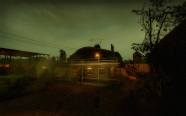
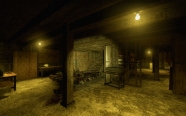
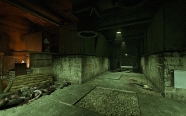
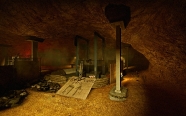
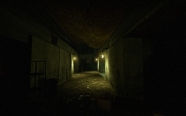
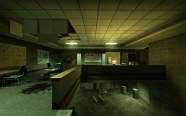
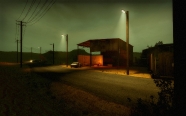
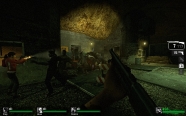
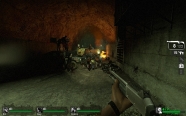
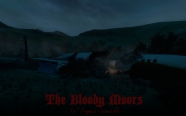
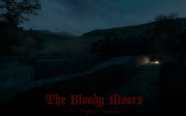
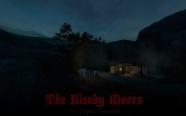
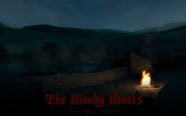
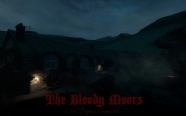
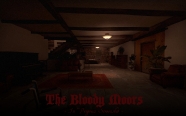
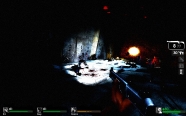
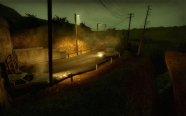
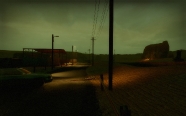
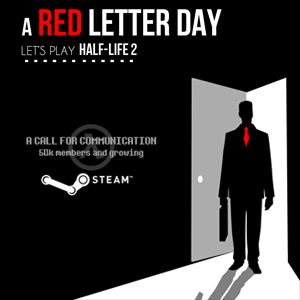
I used to do a lot of mapping for UT2k4 and have just started up with Hammer and L4D2 as a means of proving myself as a single player mapper. I agree wholeheartedly with Kev’s approach and philosophy about what to take on with your custom level work. I would also like to say, that was a great interview, and that I enjoyed very much playing the One 4 Nine campaign, and am looking forward to The Bloddy Moors.
Awesome interview guys from both parties! Really good info in this, thoroughly enjoyed!
Great interview! Really interesting to read about Kev’s background. He’s definitely one of the most talented mappers out there.